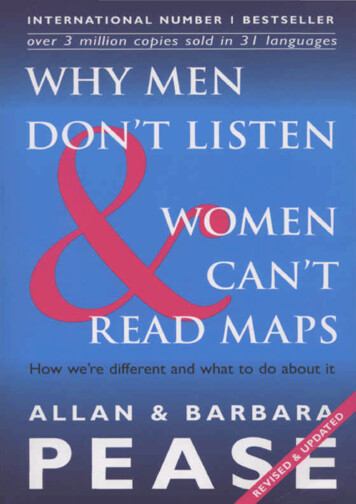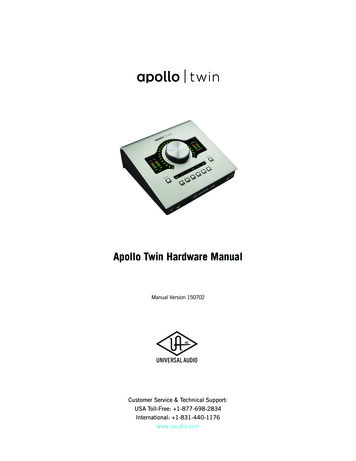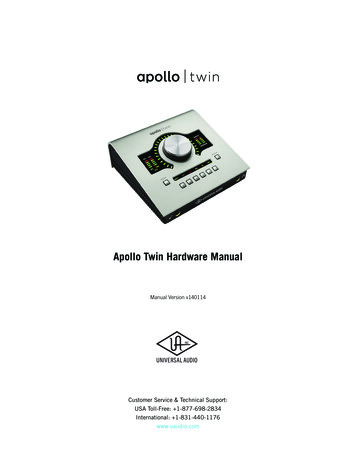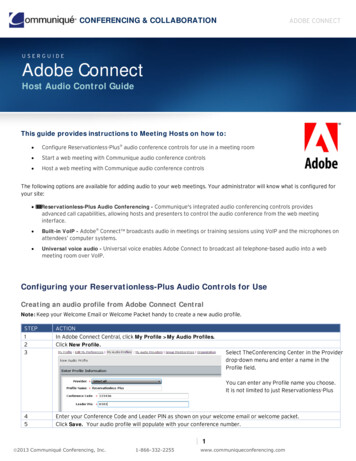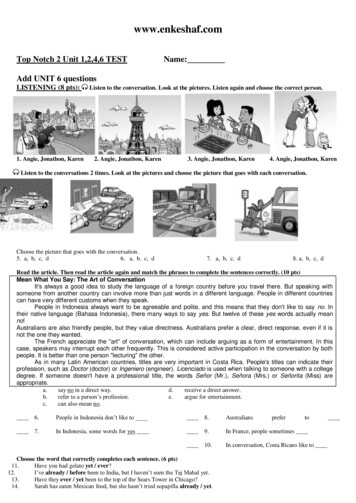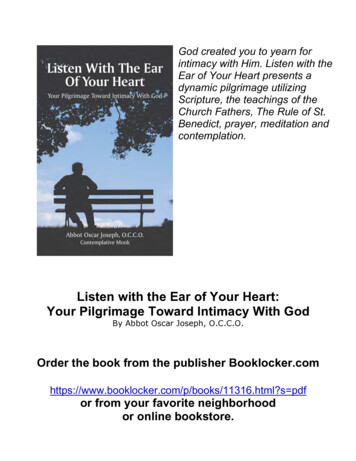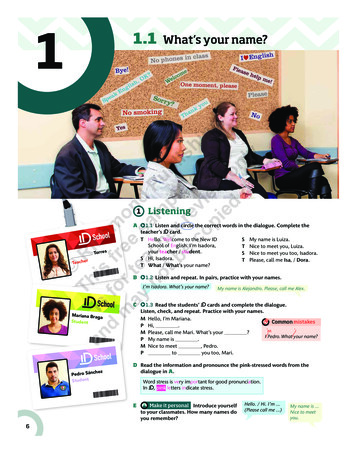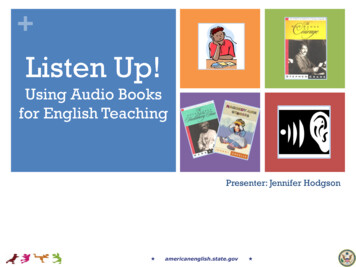
Transcription
Listen Up!Using Audio Booksfor English TeachingPresenter: Jennifer Hodgson americanenglish.state.gov
Audio Book SeriesDownloadable text and audio at: americanenglish.state.gov
to download audio files: right click on the file, select “save link/target as”
Benefits of UsingAudio Books withEnglish LanguageLearnersCan you thinkof anybenefits?
Why Use Audio Books? Exposure to patterns, intonation, expressions, different accents& dialects, and pronunciation of a language Provides example of fluent reading Dramatized audio books can increase students interest in thetext Allows “readers” to enjoy a book at their interest level, even if itis above their reading level Students can work at the same pace With text & audio: a multisensory approach to reading Supports auditory learners Helps with literacy development Improves comprehension of text
Ways to UseAudio Books inthe Classroomand Beyond WholeClass ReadingCenters (In Groups) ClassroomManagement Independently
Reading Centers (Groups)Classroom Setup 1Classroom Setup 2
“Audio Books & Literacy”Dr. Frank Sarafinihttp://www.audiobookexpress.ca/Audiobooks Literacy.pdf
ClassroomManagement Rewards Warm-ups, closings,transitions During “boring” tasks Ex: clean-upIndependently Commuting/Travelingtoand from school While Andoing daily choresincentive program
Reading & Listening Skills VocabularyBuilding Listening/ReadingComprehension Listening/Readingfor Details Summarizing Prediction Analysis& Sequencing
Vocabulary Building Listening for Vocabulary High frequency words New vocabulary (places in a town, emotions, etc.)Highlighting a specific grammar point (articles, forms of “to be”, question words, etc.)(example: present perfect verbs, going to)Activities Raise hand Stand up Tally Categorizing
Vocabulary BuildingActivity 1: Listening for Vocabulary Assigneach student (or groups of studentsdepending on class size) one word that theywill hear. Havestudents stand up (raise their hand ortally) each time they hear their assigned word.If the word is an action word, they can stand upand do the action.
Vocabulary BuildingActivity 1: Listening for VocabularyIn chapter 36 of TheAdventures of HuckleberryFinn, students will hearthese four words. Assigneach student one of thesewords. Have them standup each time they heartheir assigned word.Raise your handeach time you hear:RatsPoisonous SnakesBugsHarmless Snakes
Vocabulary BuildingActivity 2: CategorizingIn chapter 1 of The Autobiography of MarkTwain, students will hear Mark Twaindescribe his hometown. Have students make alist of the places they hear. Next, havestudents listen again and make a list of all ofthe descriptions of the places they hear.
Vocabulary BuildingActivity 2: CategorizingLocations in a City/Town/VillageNouns
Vocabulary BuildingActivity 2: CategorizingLocations in a rchSchool houseStore
Vocabulary BuildingActivity 2: CategorizingLocations in a chSchool houseStoreDescription
Vocabulary BuildingActivity 2: CategorizingLocations in a City/Town/VillageNounVillageDescriptionHouseMade of logs, not of brick or stonePalaceStreetsA couple hundred yards, thick black mud inwet times, deep dust in dry timesChurchMade of logsSchool houseis the churchStoressmall
Vocabulary BuildingActivity 2: Categorizing Whatare some words or phrases that your studentsmight not understand? Whatare some concept checking questions you mightask? Was there a palace in the town?Do you think Mark Twain’s house was big or small? How do youknow?The streets were “a couple of hundred yards”? What unit ofmeasurement (used in our country) is similar to yards (used inAmerica)?
Vocabulary BuildingActivity 2: CategorizingIn pairs, have students discuss what theybelieve the town to look like (based on thedescriptions) and draw a picture or map ofthe town.
Sequencing & SummarizingActivity 3 Have students listen to a segment of a story(preferably with a lot of action) 2-3 times andquickly write down what happens in the story. Next, have students rewrite what happens incomplete sentences In pairs, have students compare their stories. In pairs, have students select 4-6 of the mostimportant parts write their sentences on stripsof paper. Have each pair mix their sequence and tradewith another group. Each group should try to sequence the othergroup’s cards.
Character ComparisonActivity 4In chapter 1 of The Adventures of Tom Sawyer,students will hear Aunt Polly and Tom interact.Have students describe each character basedon their interactions.
Character ComparisonActivity 4Aunt PollyTom Sawyer
Character ComparisonActivity 4HuckTomPhysicalDescriptionPersonality TraitsFeelings/EmotionsAlternative Graphic OrganizerJim
PredictingActivity 5In the beginning of The Gift of the Magi (0:24-0:55),students will listen to the very beginning.Then they will make a prediction (or creativestory) of what they think will happen.
Predicting HaveActivity 5students listen to a piece of thestory 2-3 times. Put students in pairs or groups and havestudents create a scenario to finish thestory Have students perform act 2 of the storyor have students write part 2 of the story OtherActivities: Chain story Writing a prequel
Additional Resources forAudio Books & Lesson Ideas
Ideas for Teaching with Audio Bookslearningthroughlistening.org
Audio files for English Language Learnersesl-bits.net
Free Audio Books & eBooksopenculture.com
Visit our WebsiteAccess 8 audio books for English Language LearnersAccess other downloadable resources for teachingamericanenglish.state.gov
Why Use Audio Books? Exposure to patterns, intonation, expressions, different accents & dialects, and pronunciation of a language Provides example of fluent reading Dramatized audio books can increase students interest in the text Allows “readers” to enjoy a book at their interest level, even if it is abo


